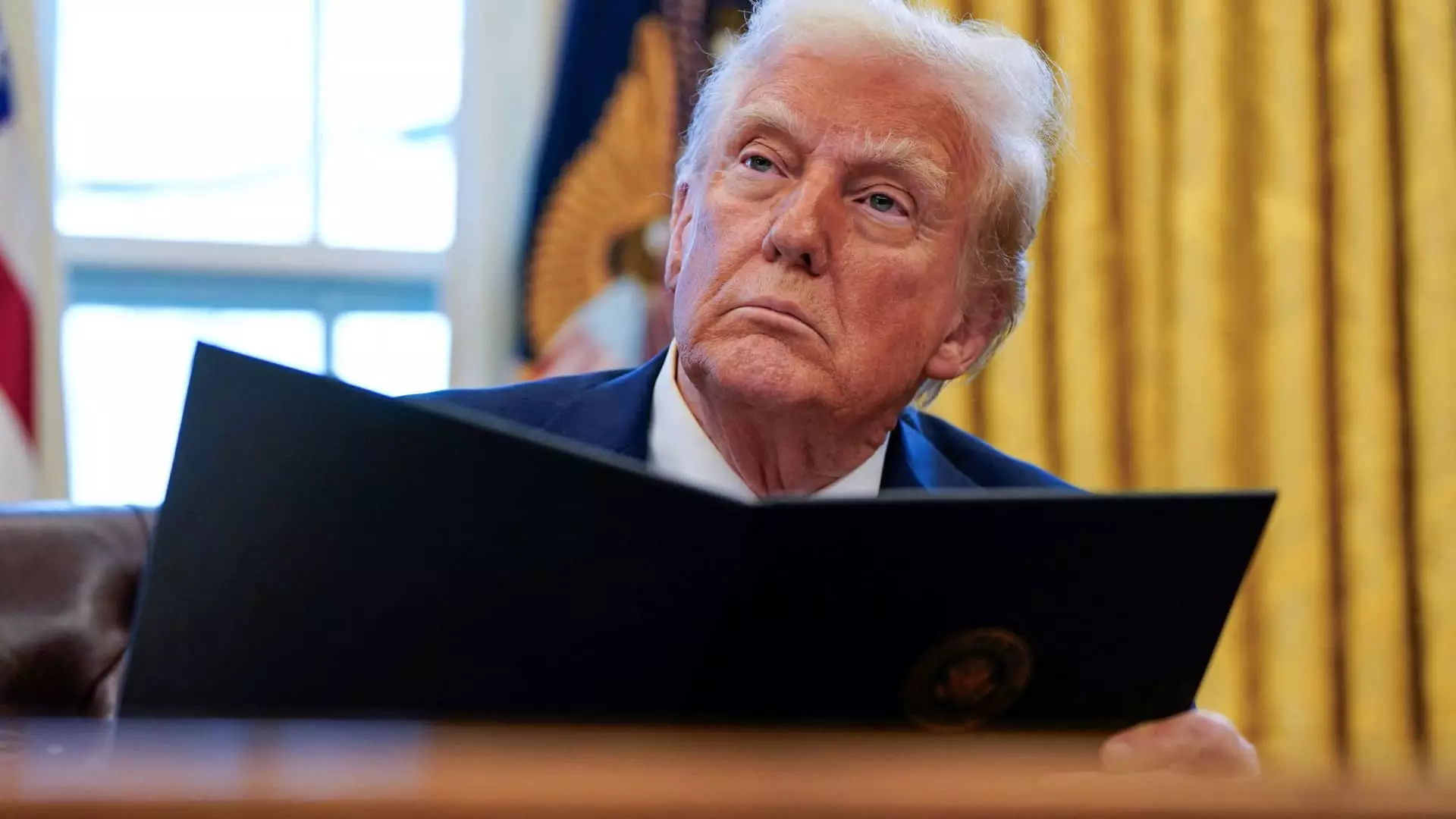In a move that has stirred significant discussion among economists and market analysts alike, President Donald Trump recently announced the implementation of aggressive tariffs set to commence over the weekend. This decision, confirmed by White House Press Secretary Karoline Leavitt, entails a sweeping enactment of a 25% tariff on both Mexico and Canada, along with a 10% levy imposed on Chinese imports. This policy action is said to be a direct retaliation against the perceived threat of illegal fentanyl trafficking, particularly from these nations, causing concern in the United States.
The White House’s announcement coincided with a notable downturn in the stock market. The Dow Jones Industrial Average plummeted by over 300 points—an indication that market confidence could be shaky in light of escalating trade tensions. Moreover, the S&P 500 and Nasdaq Composite indices also recorded losses, marking a significant reversal from earlier gains seen that day. Such a swift reaction in financial markets underscores the sensitivity of investors to trade policy changes, reflecting uncertainties in international trade dynamics.
In defense of this notable policy change, Leavitt asserted that the tariffs were part of President Trump’s commitment to uphold promises made during his campaign. The White House, however, offered scant details about the specific mechanics of how these tariffs would be enforced. Notably, many questions remain regarding possible exemptions from the tariffs and whether manufacturers may face sudden and unexpected costs that could impact pricing structures.
Additionally, Peter Navarro, the President’s trade advisor, lent weight to these tariffs by illustrating the impact of fentanyl-related fatalities in the U.S. In an interview, he challenged listeners to consider the staggering number of annual deaths as equivalent to the capacity of a packed Super Bowl venue. This analogy, while stark, is intended to underline the urgency the administration feels in addressing both drug trade and immigration issues via economic pressure tactics.
While the administration positions these tariffs as instruments of bargaining leverage, various economic experts voice concern regarding the broader implications. The potential for inflationary pressures to emerge is particularly worrisome at a time when crucial inflation metrics appear to be stabilizing; the Commerce Department had recently reported an inflation reading of 2.6%. With increasing tariffs affecting import prices, consumers may find themselves confronting higher costs for goods, which could, in turn, strain household budgets and mitigate consumer spending.
Federal Reserve officials have acknowledged these concerns, emphasizing the need for prudence in assessing the overall health of the economy in light of these trade measures. According to Fed Governor Michelle Bowman, a clearer understanding of the policies’ repercussions is essential for gauging their deeper economic impact.
Amidst the looming uncertainties of this new tariff regime, Chicago Fed President Austan Goolsbee highlights a compelling question: will these tariffs lead to retaliatory measures from other nations? The prospect of a trade war could escalate tensions and further disrupt global supply chains, which have only recently begun to recover from the upheaval caused by the COVID-19 pandemic. The risk of a tit-for-tat response could diminish the very advantages the tariffs are meant to secure.
Moreover, the broader context of international relations must not be overlooked. Trade policies, especially those characterized by aggressive tariffs, could inadvertently strain diplomatic ties and collaboration, further complicating attempts to address multifaceted issues like drug trafficking and immigration reforms.
President Trump’s announcement of new tariffs marks a significant development in U.S. trade policy that could reverberate throughout the global economy. As the administration seeks to utilize these economic tools for more than mere revenue generation, the interplay of trade dynamics, domestic inflation, and international relations will be pivotal in determining the ultimate effectiveness of this strategy. Stakeholders will need to stay vigilant, as the ramifications of these decisions unfold in a rapidly evolving landscape.



Leave a Reply